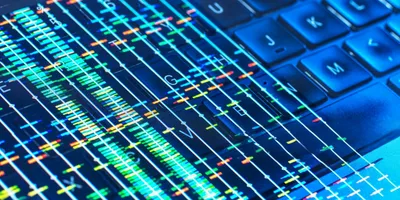Scientists have uncovered a new role for a cell's own RNA in fending off attacks by RNA viruses. Some of the cell's RNA molecules, researchers found, help regulate antiviral signaling. These signals are part of the intricate coordination of immune responses against virus invasion.
A paper this week in Science reports how cellular RNA carries out its infection-controlling function.
"With RNA increasingly seen as both a drug and a druggable target," the scientists wrote, "this opens the potential for RNA-based therapeutics for combating both infection and autoimmunity."
The senior investigator is Ram Savan, professor of immunology at the University of Washington School of Medicine in Seattle. The lead scientist is Nandan S. Gokhale, a Helen Hay Whitney and NIH Pathway to Independence Postdoctoral Fellow in Ram Savan's lab. Several other UW and Duke University researchers contributed to this work.
Ram Savan explained that some proteins in the body act as sentinels. When they detect the presence of RNA viruses, they activate interferons through the mitochondrial antiviral signaling (MAVS) pathway. The MAVS protein resides on the outer membrane of a cell's energy-producing power stations, the mitochondria.
After a cell's sentinels sense viral RNA, MAVS proteins become platforms for other signaling proteins to hop on board. These large, self-assembled molecular complexes are called signalosomes, clusters that foster protein-protein interactions and switch on immune signals. The MAVS signalosomes send out heightened-alert commands that activate interferons and other antiviral factors. These spark a variety of defenses against viruses.
"While protein-protein interactions and protein modifications are critical for antiviral signaling through the MAVS signalosome," Ram Savan noted, "our research highlights the significant role of cellular RNA molecules in this process. We identify specific host RNA and proteins necessary for the effective regulation of interferons."
The researchers pointed out that this antiviral response requires a careful balance. It needs to be strong enough to clear out viruses, yet not get out of hand and inadvertently damage tissues or set off autoimmune diseases. Previous studies have shown that overly zealous interferon-inducing pathways have been implicated in lupus and other autoimmune conditions.
Before this study, researchers knew that RNA interactions can modify the function of protein complexes in several ways -- by serving as guides, chaperones, or scaffolds.
However, how RNA influences the formation and function of immune signaling had not yet been revealed. The UW and Duke scientists publishing their results this week had aimed to explore the impact on mitochondrial antiviral signaling proteins when cellular RNA binds to them.
Their experiments suggested that cellular RNA could contribute to activating the MAVS signalosome after the cell's sentinel proteins convey that they have sensed the presence of viral RNA.
They also showed that MAVS bound to host RNA directly and determined that MAVS directly interacted with cellular RNA through a disordered region of the MAVS protein. These interactions may strengthen the host RNA modulation of factors needed to maximize the antiviral response.
The scientists identified the proteins that interacted with MAVS in the presence or absence of enzyme treatment that degraded RNA. They then picked out the proteins that had more, or fewer, interactions with MAVS in the presence of RNA. After this, they performed screens to see which of these proteins helped induce interferon and were required to restrict virus replication.
Lab Management Certificate
The Lab Management certificate is more than training—it’s a professional advantage.
Gain critical skills and IACET-approved CEUs that make a measurable difference.
The scientists concluded that their experiments confirmed a role for cellular RNA in promoting the function of the MAVS signalosome, and thereby, antiviral signaling. The findings add new information about how MAVS signaling is controlled and suggest the possibility of additional cases where RNA regulates other immune signaling protein complexes.
-Note: This news release was originally published by the University of Washington School of Medicine/UW Medicine. As it has been republished, it may deviate from our style guide.












